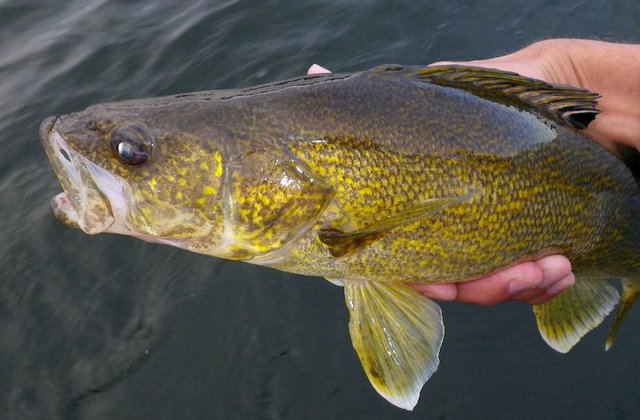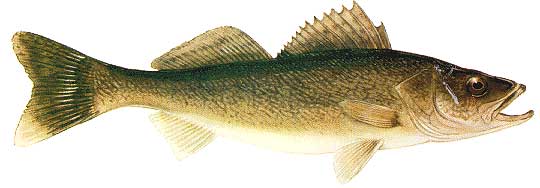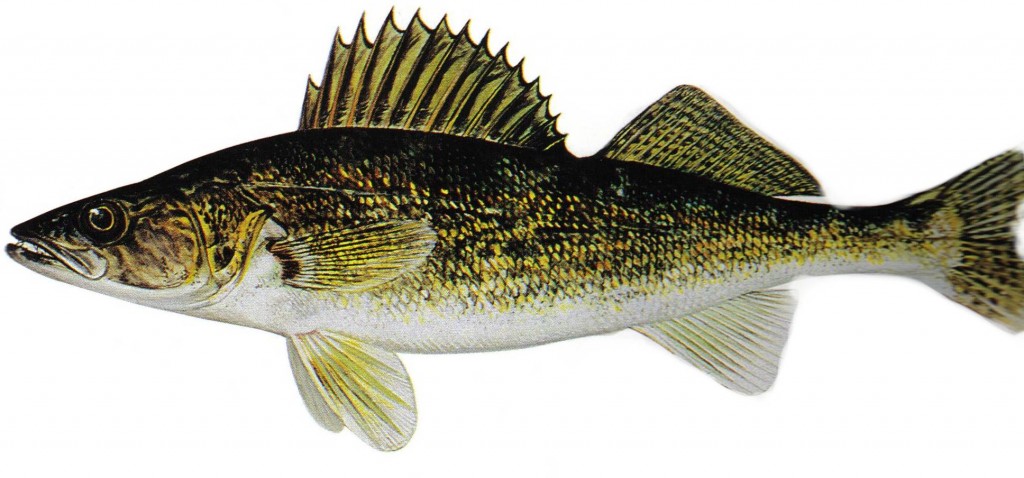
Stizostedion vitreum
FAMILY
Percidae
TAXONOMY
Stizostedion vitreum Mitchill, 1818, Cayuga Lake, Ithaca, New
York, United States. Two subspecies are recognized.
OTHER COMMON NAMES
English: Walleyed pike, blue pike, gray pike, green pike, yellow
pike, pickerel, dory, glass eye, marble eye, pikeperch;
French: Dorй dorй jaune; German: Amerikanischer Zander.
PHYSICAL CHARACTERISTICS
Maximum total length 42 in (107 cm), but fishes below (often
well below) 24 in (61 cm) are the norm. Long, fusiform body
with large, translucent eyes. Body is typically brownish.
DISTRIBUTION
Most of the United States and Canada, except for far northern
and eastern Canada, and far southern and western United States.
HABITAT
Freshwater (rarely brackish); inhabits lakes, ponds, and larger
rivers, prefers sites with shallow, somewhat murky waters.
BEHAVIOR
Beginning in late winter, small groups of up to a half-dozen
males will begin chasing one or two gravid females. The females
are noticeably larger than the pursuing males. Eventually,
the females will lead the groups to very shallow water,
sometimes only a few inches below the surface, for a single
night of spawning.
FEEDING ECOLOGY AND DIET
Feeding sessions begin at sunset and carry on into the night.
An opportunistic predator, the diet comprises fishes, especially
yellow perch and invertebrates, but it is also known to take
frogs and mudpuppies.
REPRODUCTIVE BIOLOGY
A broadcast spawner, reproduces over a variety of substrates,
including sandy, gravelly, or rocky lake and river bottoms, as
well as stream vegetation, usually in an area where the water is
moving either via a slow current or shoreline waves. The female
scatters her eggs. Breeding occurs in spring to early summer,
sometimes even in late winter. Egg production in the
females begins much earlier, and anglers find females well
laden with eggs in early winter. Eggs hatch in one to two
weeks. No parental care of eggs or young.
CONSERVATION STATUS
Not threatened.
SIGNIFICANCE TO HUMANS
Major sport fishes and minor commercial food fishes.
Photo Gallery of - Walleye





 Animalia Life
Animalia Life